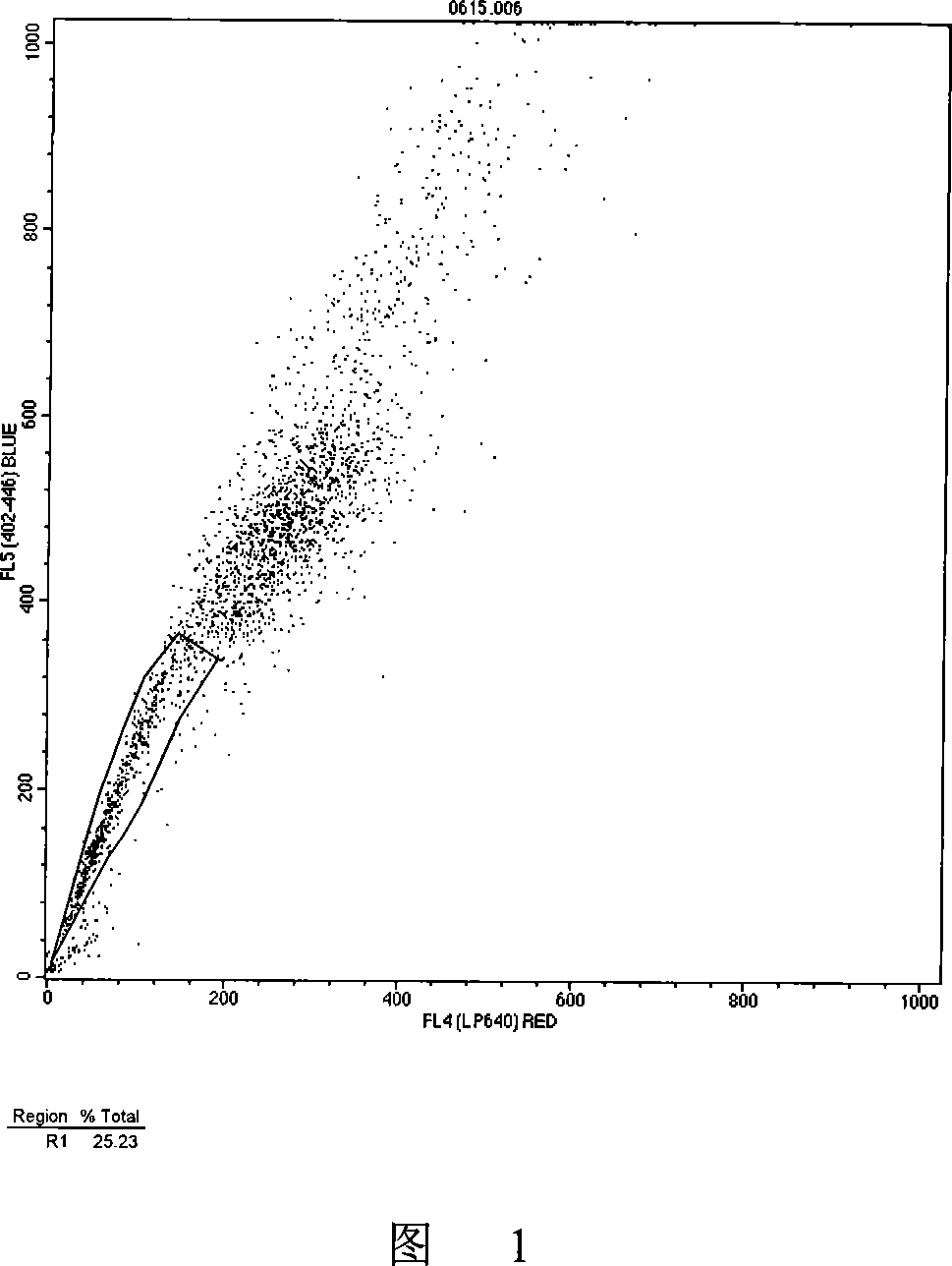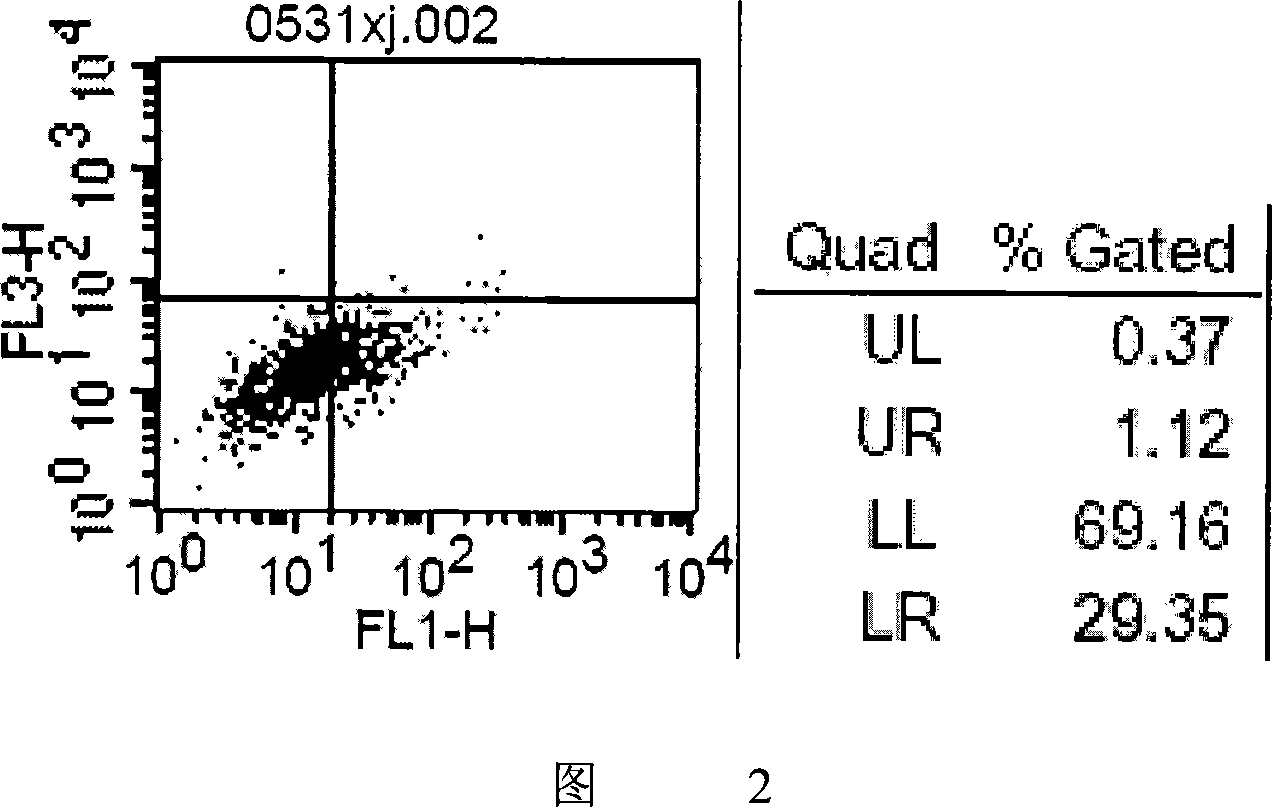Method for separating stem cell of breast cancer
A breast cancer stem cell and breast cancer cell technology, applied in the field of tumor research, can solve the problems of limited ability of tumor stem cell enrichment, rough method, impossible to achieve high sorting efficiency and purity, etc.
- Summary
- Abstract
- Description
- Claims
- Application Information
AI Technical Summary
Problems solved by technology
Method used
Image
Examples
Embodiment 1
[0026] In this example, the tumor stem cell-related subgroups in the breast cancer cell line MCF-7 were isolated according to the following steps:
[0027] 1) The breast cancer cell line MCF-7 was digested with trypsin-EDTA into a single cell suspension.
[0028] 2) Configure six Percoll separation fluids with different densities, the densities are 1.035g / ml, 1.040g / ml, 1.050g / ml, 1.060g / ml, 1.070g / ml, 1.080g / ml, 2ml for each density layer, Stacked in sequence according to density to make Percoll discontinuous density gradient separation liquid.
[0029] 3) The prepared single cell suspension was carefully superimposed on the top of the Percoll discontinuous density gradient separation medium, and centrifuged at 2000 rpm for 30 minutes.
[0030] 4) Carefully suck out the cells of each subpopulation layered in the Percoll separation medium after centrifugation, and wash twice with PBS for later use.
[0031] 5) For each subgroup of cells separated above, each subgroup is prov...
Embodiment 2
[0034] In this example, the tumor stem cell-related subgroups in the breast cancer cell line MDA-MB-231 were isolated according to the following steps:
[0035] 1) Digest breast cancer cell lines or primary breast cancer tissues into trypsin-EDTA single cell suspension.
[0036] 2) EGF, bFGF, insulin and other growth factors were added to DMEM / F12 serum-free culture medium to prepare serum-free culture medium.
[0037] 3) Place the digested single cell suspension in serum-free medium and culture for 3 weeks.
[0038] 4) The MDA-MB-231 enriched in tumor stem cells after 3 weeks of serum-free culture was digested with trypsin-EDTA into a single cell suspension.
[0039] 5) Divide the above cell suspension into experimental tubes and control tubes, the number of cells in each tube is 10 6 cells / ml, add CD to the test tube 44 -FITC, CD 24 -PE, not added to the control tube, stored in the dark for 20 minutes at room temperature, washed twice with PBS, resuspended in 400ul of PB...
PUM
 Login to View More
Login to View More Abstract
Description
Claims
Application Information
 Login to View More
Login to View More - R&D
- Intellectual Property
- Life Sciences
- Materials
- Tech Scout
- Unparalleled Data Quality
- Higher Quality Content
- 60% Fewer Hallucinations
Browse by: Latest US Patents, China's latest patents, Technical Efficacy Thesaurus, Application Domain, Technology Topic, Popular Technical Reports.
© 2025 PatSnap. All rights reserved.Legal|Privacy policy|Modern Slavery Act Transparency Statement|Sitemap|About US| Contact US: help@patsnap.com


